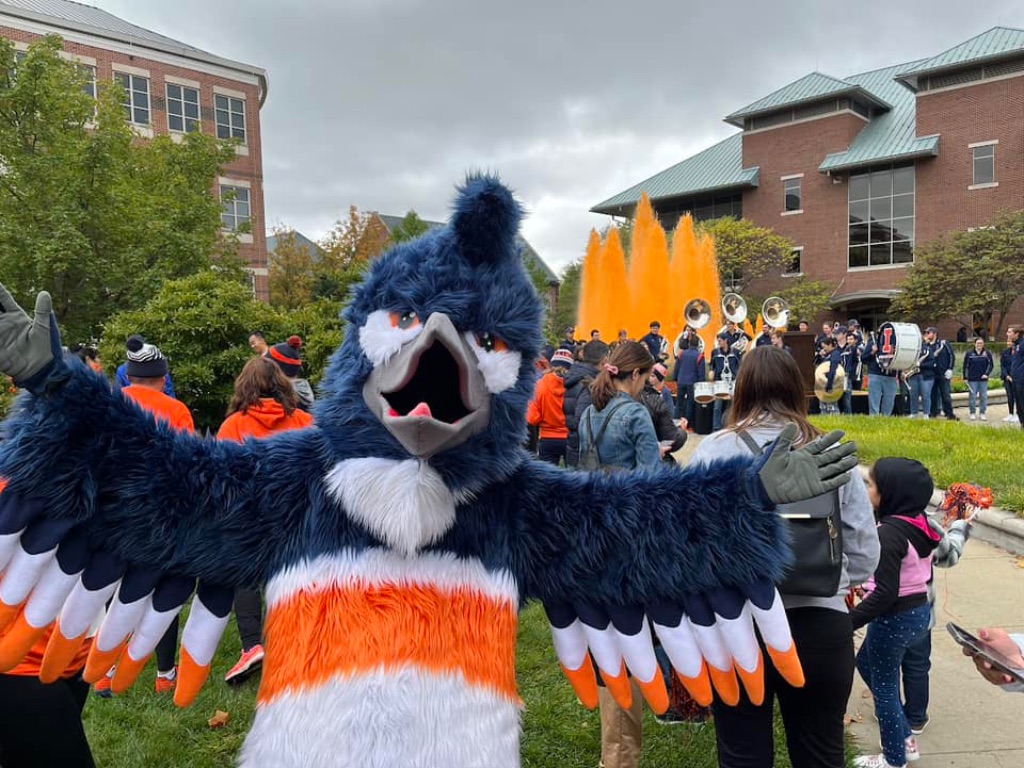If you’ve read Smile Politely for any length of time, you know we are big fans of the Kingfisher mascot and we’ve pointed out that the University of Illinois students have been really embracing it, too. But as some of the online comment sections indicate, it might be easy to forget that there are actual people — students, in fact — responsible for bringing this bird to life. I wanted to take some time to get to know more about them and what makes this mascot worthy of representing the U of I, and as you’ll read, the amount of creativity and work it took is incredible. (Note: The Kingfisher would only be a mascot; there is no movement to change the name of the Fighting Illini.)
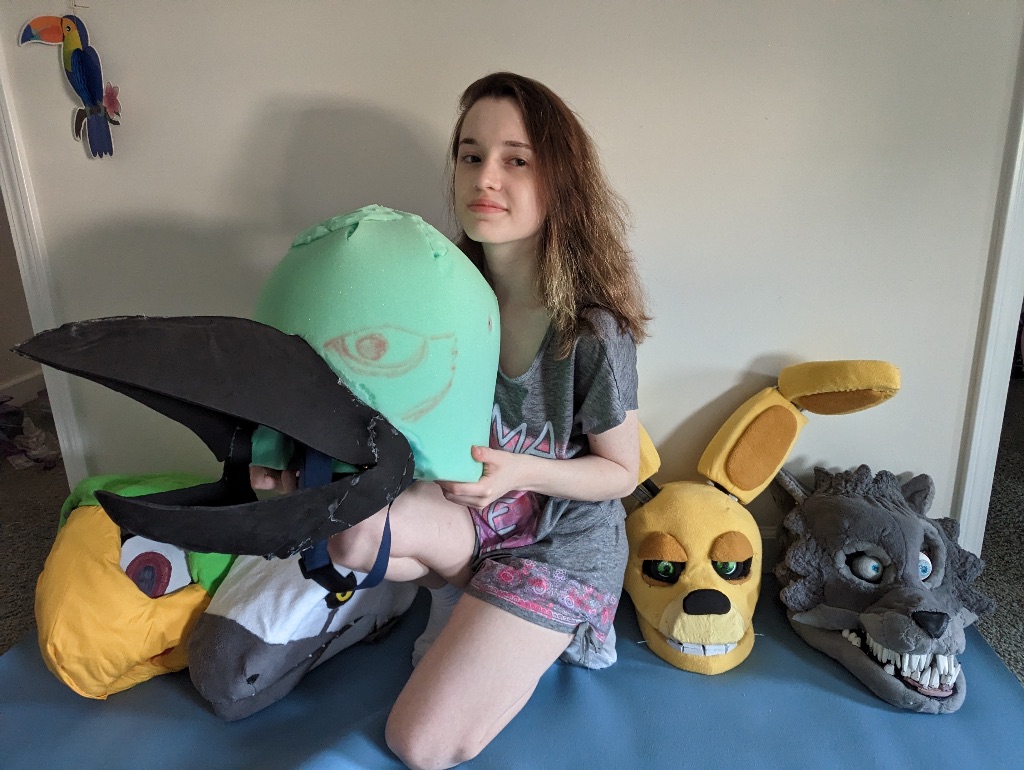
This interview has been edited for length and clarity.
Smile Politely: Can you tell me a little bit about yourself and what you do?
Ellie Rebellón: I’m currently a second year undergraduate student majoring in General Studio Art at the University of Illinois. I’m a self-taught artist who’s been drawing, animating, and making costumes since I was two years old. Since 2020, I have learned how to work with electronics by programming effects into props and cosplays. Some of my most impressive wearable creations (as shown in the above photo from left to right) are José Carioca from the 1942 animated Disney film Saludos Amigos, a dinosaur known as Dromaeosaurus albertensis for my Biology of Dinosaurs class last year, Springbonnie from the video game series Five Nights at Freddy’s, and the Twisted Wolf from the Five Nights at Freddy’s The Twisted Ones novel. The Kingfisher mascot head base is in the center with me, of course!
Evan Lemberger: I’m a Senior in Civil and Environmental Engineering. Before starting this project, most of my time was spent reading, acting, and doing environmental work with Red Bison.
Spencer Hulsey: I am a first-year PhD-track graduate student studying Astronomy, with an undergraduate degree in Physics.
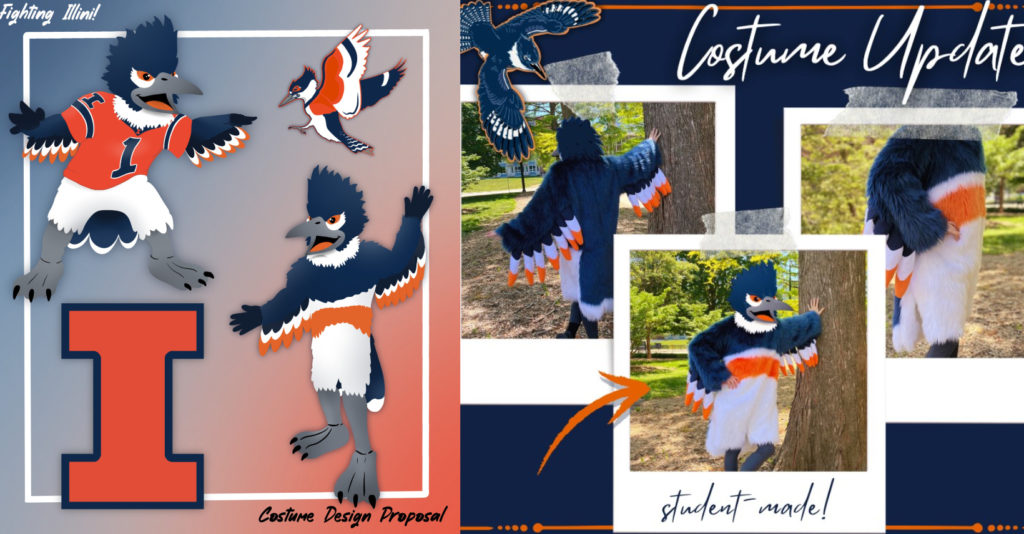
SP: What role did you play in the making of the Kingfisher?
Hulsey: I proposed the suggestion nearly four and a half years ago! I then worked with the U of I student government to take the idea to a vote (something our campus had tried before with other options, but none had quite brought students together up to this point). Together, we led the education campaign prior to the campus-wide student vote. I also met with a lot of administration before, during, and after all key milestones (votes and endorsements) to ask for any necessary permissions and guidance, and have been very grateful for their continued support during these meetings. After graduating, I collaborated with — and learned a great deal from — the four national tribal rights groups on the letters to the Chancellor. Now that I’m back, I’ve joined the undergraduate group which has taken the bird so much further than just the original votes.
Rebellón: My work with the Kingfisher mascot first began in late November 2022 when I helped create the reference sheet for the Kingfisher mascot design. After producing two different designs, Spencer Hulsey and I co-created a final design for it. Afterwards, I spent three months creating a budget for the list of materials needed to create the costume. Finally, in March 2023, I began working on the head and feet and by August 2023, our bird was complete.
Lemberger: I was the student who led the charge in creating the mascot suit. With the help of some friends, I put a team together (including Ellie Rebellon, myself, and a third person who’s since left the project) that would design and make the suit. My role in that part was sewing the entire body together. I had some help with the more complicated stitches, but most of that work was all me.
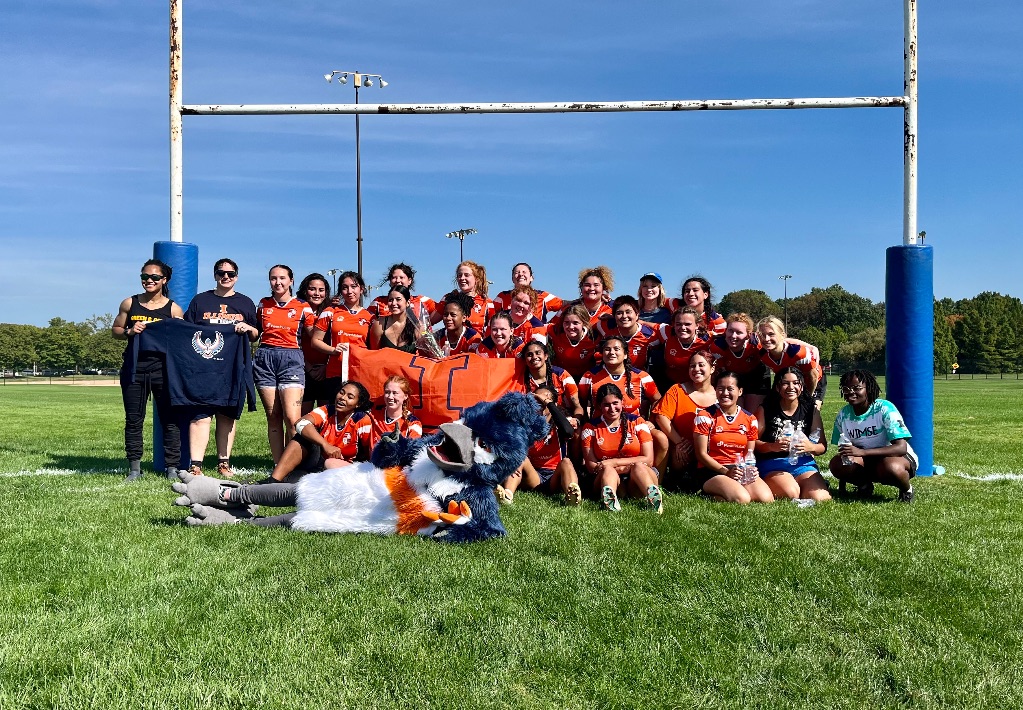
SP: What drew you to this project?
Rebellón: In November of last year, during a car ride, my sister asked if I’d be interested in helping create the Kingfisher mascot costume. As someone with a huge affinity for birds and making costumes, I agreed, and from that day onwards, my life as an artist was forever changed. The positive and progressive attitude that surrounds the individuals involved with the Kingfisher is so attractive and inspiring to me, and it is for this reason that I believe I made the right decision in joining the push for new traditions on campus.
Hulsey: I owe my inspiration for addressing the issue of our campus’ missing mascot to many advocates on our campus — it’s hard to pinpoint a single source.
SP: What makes the Kingfisher a great mascot in your opinion?
Hulsey: A top reason for me is that no matter where our students are from in the world — over 20% of U of I students are international — they’ll know of some species of kingfisher, an iconically orange and blue bird. The belted kingfisher, the kingfisher species native to Illinois, is one of the largest and toughest-looking of the kingfisher family. (They’ll beat their prey to death on rocks before eating it whole.) The Maryland Terrapin better watch out: these birds will eat turtles and other birds in a pinch. Our school shouldn’t settle for something already claimed by another university, especially not something as basic as an eagle or dog or something that needs to be handled with white gloves. Belted kingfishers are a blank slate, to be built however we want it to be.
Rebellón: There are so many aspects of the Kingfisher that I appreciate: it has never been used as a college mascot before, making it really unique and one-of-a-kind; it is naturally true to the orange, white, and blue color scheme of this university; birds are the most incredible and beautiful animals in my opinion; she is a female mascot per her signature orange “belt” and as a hardcore feminist, I love the notion of women empowerment and anti-sexualization being promoted in any way possible. Most of all, since our university currently has no mascot, it offers a new symbol all students, faculty, and alumni can unite under as a community, establishing an inclusive and engaging environment for everyone.
Lemberger: The Kingfisher is a bird that lines her nest with the bones of her prey. It’s just the amount of power and intimidation that we need from a college mascot.
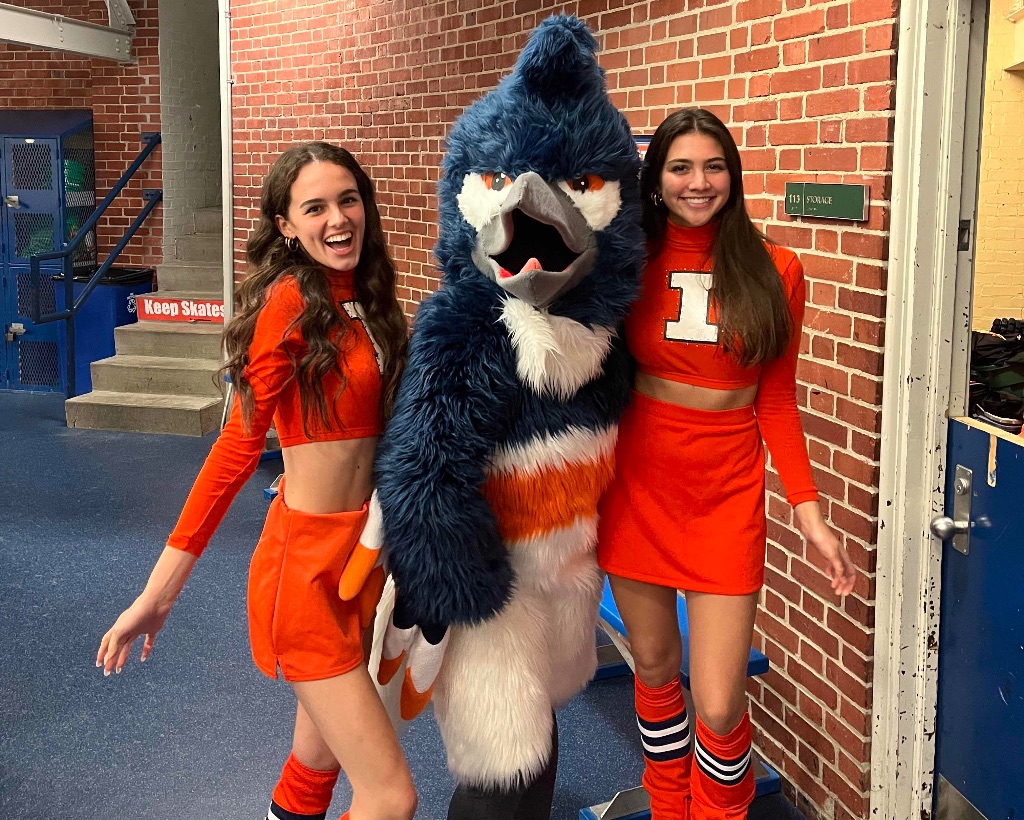
SP: Can you tell me a little bit about the design/production process (depending on what your role was)?
Hulsey: I drew the original mock-up designs for the student vote, which were just intended to show what the bird looked like, and were not intended to serve as any official logo. I’ve since drawn a few of the designs that have been featured widely in social media and news reports, and oversaw the design process for the suit itself (though the current undergrads did most of the heavy lifting with that).
Rebellón: When I made the initial mockup designs for the Kingfisher mascot costume, at first, it was only a matter of drawing out sketches on paper, but then, once I started illustrating designs on my art software, the coloring and designing process truly took flight. Creating the head and feet of the Kingfisher mascot costume involved lots of hand to eye coordination and translation; shaping, cutting, sewing pieces, and hot gluing foam and fabric together, with the most difficult part being the head, for it is the first thing everyone sees.
Lemberger: In January 2023, Rebellón and Hulsey finished the rough design of the suit, including color patterns, number of feathers, and other details. Immediately after that, I started learning everything I could about sewing, fur work, pattern making, and everything else that would be helpful. Before this project, I’ve never touched a sewing machine before, so I needed help from Siebel Center for Design, faculty, friends, and online sources to make this all possible. I spent February, March, and April making the pattern, testing fur samples, and getting everything together. All the fabric arrived mid-April, so I began cutting, brushing, and sewing all the fur into the body suit. After a month, it was all done. The head was finished in mid-August.
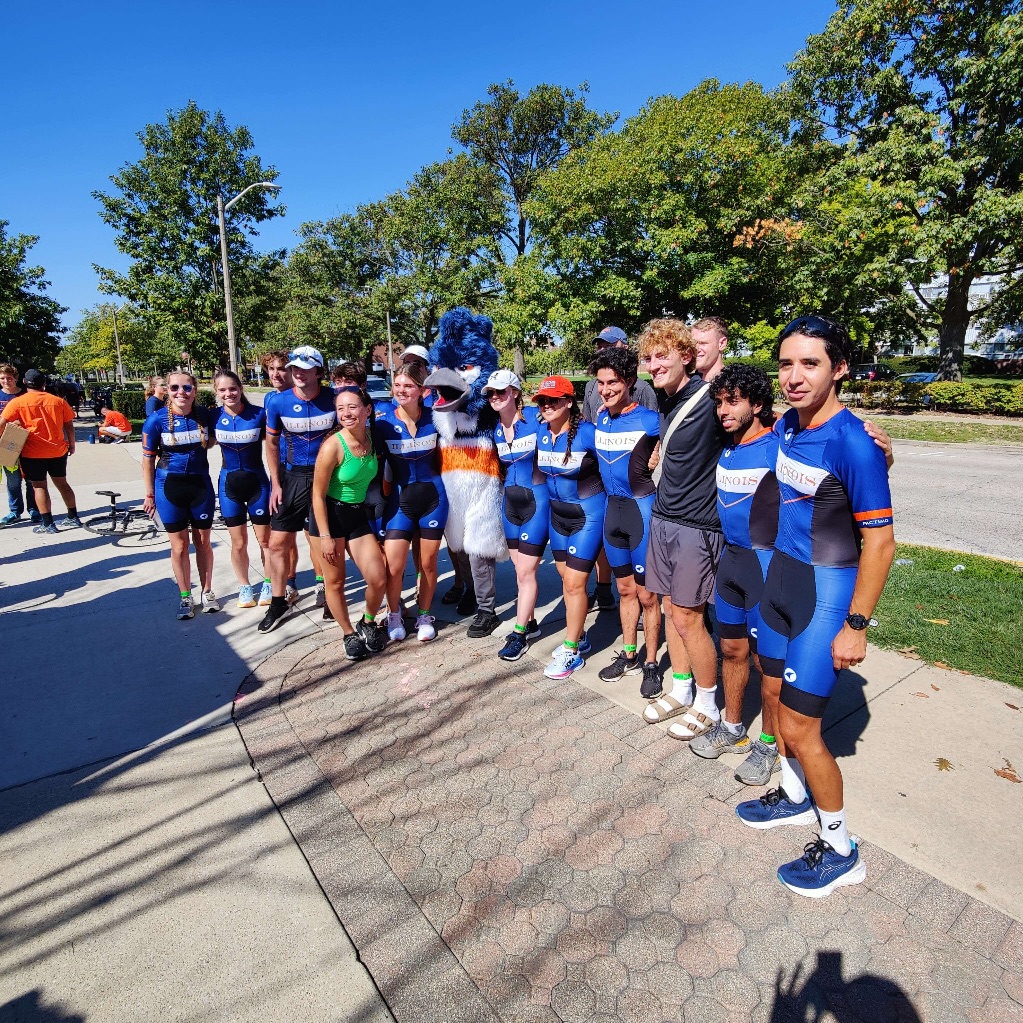
SP: What do you want people to know about the Kingfisher?
Lemberger: At this moment, I want students and the community to know that this is their mascot, and that they’re welcome to get involved and help us tell its story.
Rebellón: I want people to know how incredibly fun, exciting, and fitting the Kingfisher mascot is, especially on this campus.
Hulsey: Having a mascot for our campus gives students another way to have fun and create fond memories. A new mascot does not detract from any of our campuses current traditions: it augments!
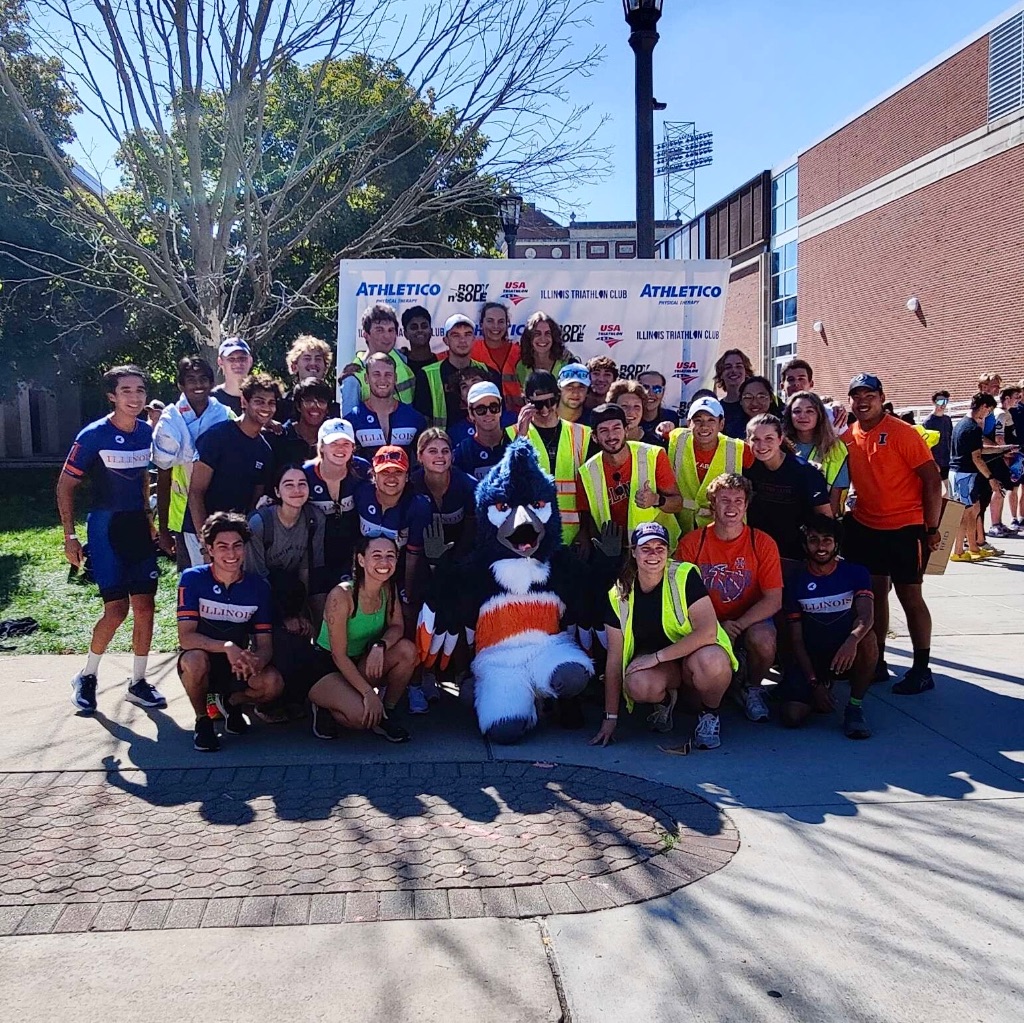
SP: Do you have a favorite way the mascot has been incorporated into a design or logo?
Lemberger: Spencer recently drew a Kingfisher playing hockey, which will be used to help promote our hockey teams that have been so supportive of our work. It’s wonderful, and I hope I get to see it on some jerseys soon.
Rebellón: I love how the Kingfisher naturally contains orange, white, and blue just like our school colors, it’s incredibly perfect!
Hulsey: On campus I think we’ve seen nearly two dozen clubs on campus with Kingfishers in their logos now. I think it’s a tie between NRES and Engineers Without Borders, who are both fundraising with Belted Kingfisher logos now. Kingfisher Kayaks, a local outdoors business, was inspired by the student vote! Off campus: NBC Sport’s rendition of the Kingfisher battling it out against the other Big Ten mascots. A considerable amount of media are already treating the Kingfisher as official.
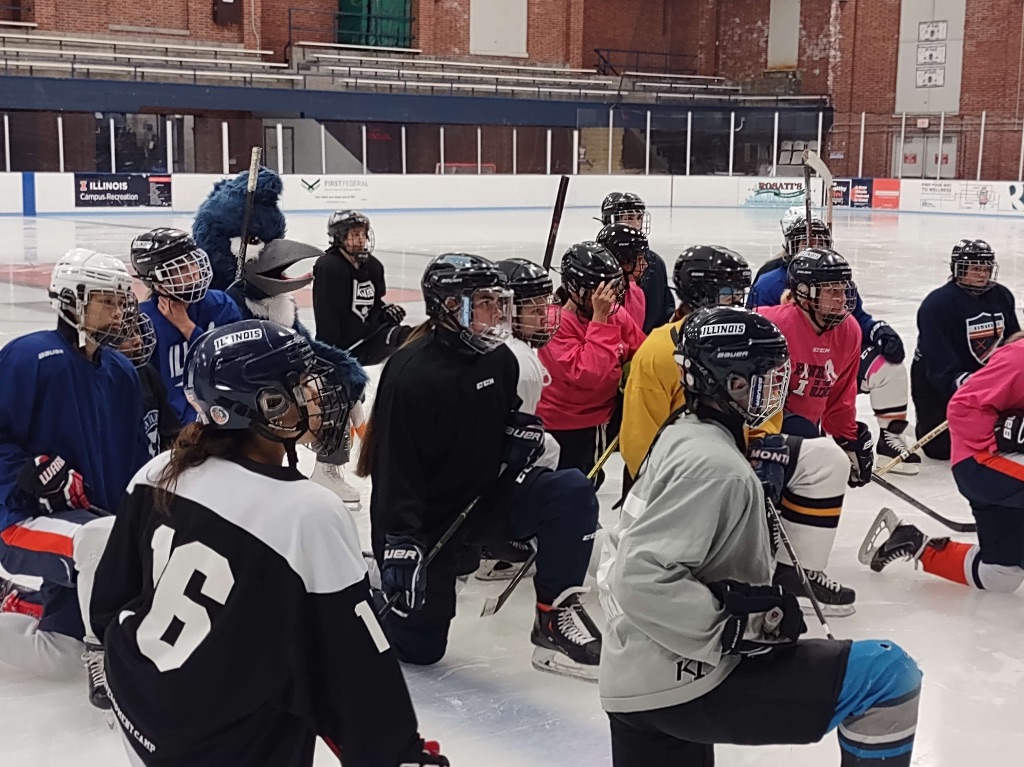
SP: What has been your favorite part of working on this project? Your least favorite part?
Lemberger: My favorite part has been people coming up to us in droves wanting to meet our bird. I cannot stress enough how thankful and how happy I am about the positive reception students have been giving when they see us. There’s no least favorite part. I love the work.
Rebellón: By far, my favorite part of working on this project was the day I finished the mascot costume, because hearing and seeing the pure joy in the words and expressions of my fellow Kingfisher Taskforce members truly warmed my heart. I was making dreams come true and I couldn’t be happier. Ultimately, my least favorite part was the suspense of finishing the head, my hands were getting sweaty, I was praying the fur that took ages to sew and assemble would fit correctly per my calculations, and I was hoping the face would resemble that of the fierce and magnificent bird Spencer wanted. It was nerve wracking, but I did it!
Hulsey: I love seeing all the student-made kingfisher designs around campus. There are so many! Least favorite? It’s taken me a lot to get over this repeated mantra that our community “isn’t ready for a mascot.” This simply isn’t true. As soon as we get out of the online comments under the articles and out into the actual games and public events, it’s just incredible amounts of love and support. Even at the Grange Grove tailgates for football games, which carry a stigma that a mascot wouldn’t be welcome (which is quite odd for school spirit, if you think about it) we were met with a steady stream of smiles and hi-fives and football tosses and photoshoots.
SP: How would you define success with this project?
Hulsey: A photo of the Kingfisher high-fiving a member of the Marching Illini in Memorial Stadium would be pretty great. Maybe a few years down the line.
Rebellón: In this project, success, as I see it, is if members within the Kingfisher Taskforce end up recruiting, selling, promoting, and sharing this mascot with enough of the right people, and we can create more bonds and connections through this mascot within the community.
Lemberger: I’m not going to live forever, so I know eventually I won’t be able to give anything to this mascot. Success for me is knowing that I don’t have to. If I can inspire people to pick up this mascot and keep it going after I leave, I have succeeded.
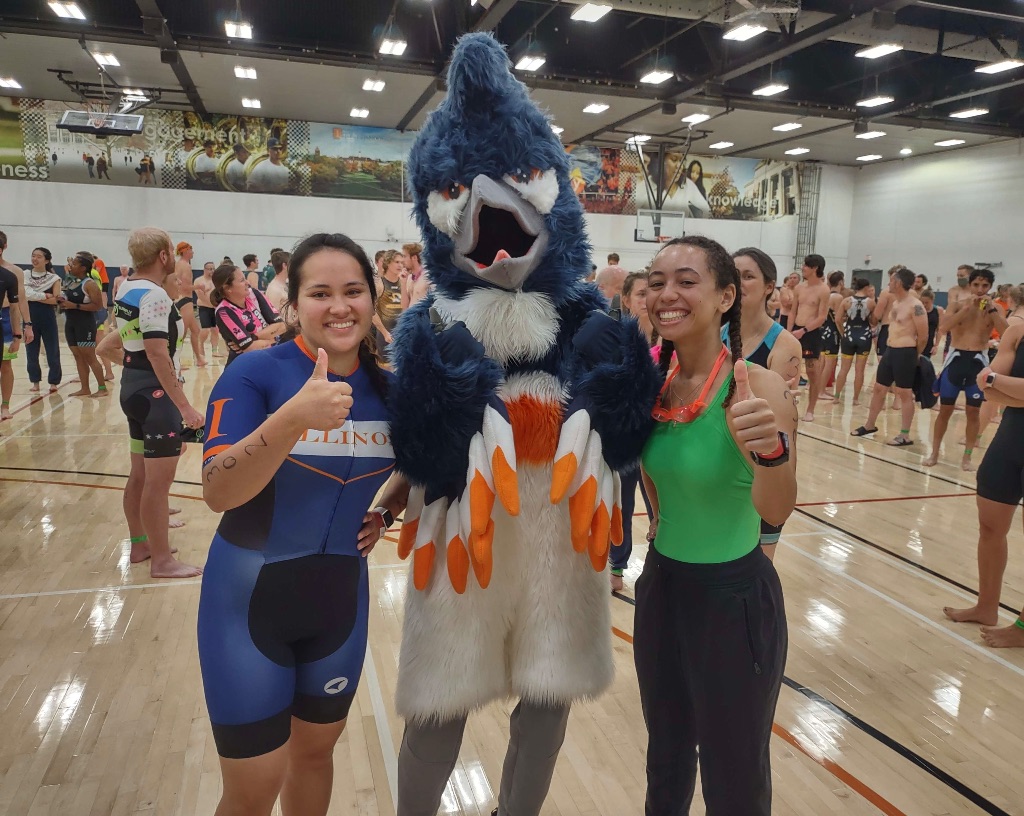
SP: Why is a mascot so important to the culture of the school?
Lemberger: Mascots are an easily visual way for students to celebrate being at the U of I. Not only is admission something for many students to be proud of, but being part of student life, from the house shows, to the division I games, to the unique performances at Krannert Center for the Performing Arts, is invigorating and something really special. A mascot is a perfect way to wrap up all those memories and identify them with a single image, and I’m happy to see our bird gradually becoming that image.
Rebellón: Mascots bring whole communities together on the basis of a loveable icon or idea, and that is something every student should be able to experience.
Hulsey: I think the four tribal organization letters of endorsement explain this best, but in short: a mascot is a timeless figurehead for school spirit, that is constant even as teams and coaches change.
SP: It seems that the Kingfisher is pretty popular with the student population. Have you felt supported by the student body?
Lemberger: The student body loves us, and we love them. We’re thrilled to continue arranging events with such a receptive campus.
Rebellón: Yes, whenever I share merchandise or information with my peers and friends, I’m always met with positivity and intrigue, a good sign in my opinion.
Hulsey: We’ve had such a great time at the triathlon, hockey, and rugby games and have been met with nothing but warmth from the community. I am so incredibly lucky that every time I am nervous about a campus showing, our community — not just students, but alumni, faculty, and staff — has proven me wrong time and time again.
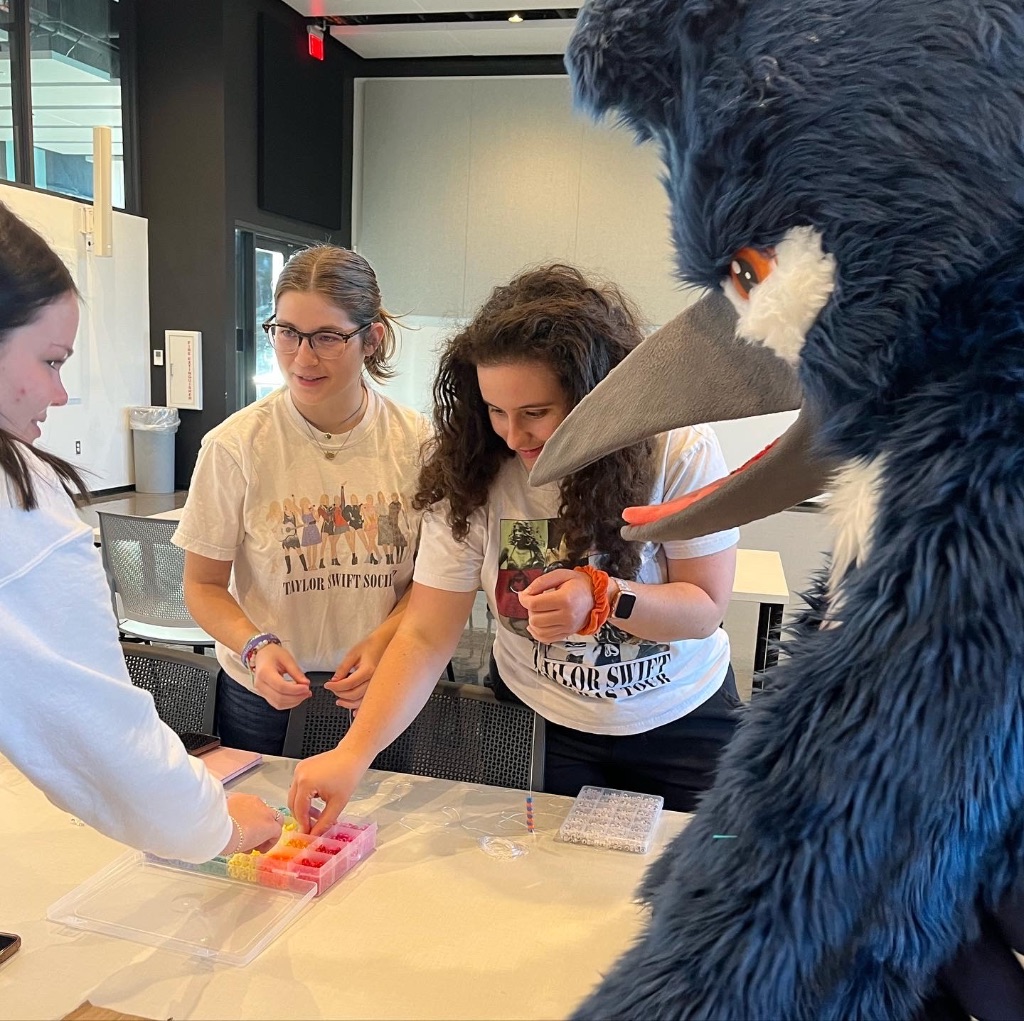
SP: What is your favorite place on campus?
Hulsey: Loomis.
Rebellón: My favorite place on campus is the Main Library because I find it fascinating that our school has the one of the largest college libraries in the world. Also, the water at the Main Library is so crisp, fresh, and enjoyable. I love finding books and navigating my way through the Main Stacks and the ginormous moveable racks, it makes me feel so adventurous.
Lemberger: My favorite place on campus is the Native American House. The people there are very welcoming and their events are always fun and well put together.








